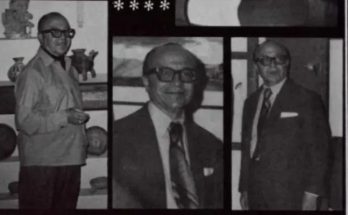By Luis Felipe Rodriguez
On Sunday, May 28, 1967, telephone service began in SMA. Telefónica de México, Telmex, had been founded 20 years earlier, when Ericsson of Mexico and International Telephone and Telegraph Company (ITT) merged. Telmex was the only telephone service provider in the country. On August 20, 1958, Mexican businessmen were given legal permission, and acquired all of the shares of Telmex, placing control of the company in national hands.
In the Spanish soap opera series “Las Chicas del Cable,” the switchboard operators are women. This is factual: the first female telephone operators marked a before and after for women in the work force. With this job, women gained an entry into the job market, a world that in that era was completely dominated by men.
In San Miguel the telephone office was on calle Hidalgo, in the home of Soledad (Cholita) Ceballos, who managed the office. The switchboard operators were Josefina García Rincón de Sautto, Beatriz Frías, Esther Sierra, Tita Saavedra, Tere López, Tere Aguado, Angelina Gómez, Carmen Contreras, and Tere Rodriguez. My wife, María Cristina Téllez Muñoz, got her first job in this office; she provided numerous details for this article. The technicians were Nacho Chávez and his sons, Jesús (Chusgue) and Miguel (Boa), and Rubén, the famous Ranchero, who came from Celaya. One of the most-used public telephones was located at Mesón de San José, on calle Mesones. Some old timers may remember that the tenants of the Ignacio Ramírez Market helped each other out when a call came in by shouting the name of the person who being called at the top of their lungs. The name was repeated, flying from stall to stall until it reached the right person. The phone was located at the entrance of the inn, and while the person spoke, those near him kept a discreet silence.
The operators handled the 400 numbers on the switchboard. The women had to memorize not only the names of the owners, but also their relatives and, in some cases, the socially correct form of addressing them. The user would dial the central station, and the operator would take the request. For example:
– Get me #1-37.
– Immediately, Sir.
Some land line telephone numbers have kept their original numbers or a part of them, as in my case. My number was 2 09 11. When the emergency system was unified, it was changed to 2 64 11. Here are some of the original numbers:
1 Mayor’s office
12 La Aurora Factory
20 Attorney Leobino Zavala
22 Municipal Police
45 Civil Hospital
68 Nurse Carmen Barajas
When telephone service became automatic, the switchboard operators became obsolete. Their labor rights were respected, however, and they were offered jobs at the telephone office in Celaya, which most accepted.
On May 27, 1996, the last work day at the switchboard office, a very interesting telephone message was reproduced in “El Fisgón Anteojudo,” San Miguel de Allende’s newspaper at the time: “Those of us who have worked in the great Telephone Company of Mexico for 29 years, those of us who will step aside to make way for electronic devices for the future and automatic service, are grateful to the representatives of this company, the union leaders, our colleagues, and of course each and every one of the subscribers of this city, this small and beautiful piece of our beloved homeland, San Miguel de Allende, which is heading by leaps and bounds towards progress. Wishing that each one of our actions will turn not into thorns but into fragrant roses, we send our greetings and thanks to the telephone subscribers who, out of kindness, gave us gifts at Christmas and on the day of the telephone operator, the first of August. To everyone, I only wish happiness, peace and prosperity.” Signed, Josefina Garcia Rincón de Sautto Malo




